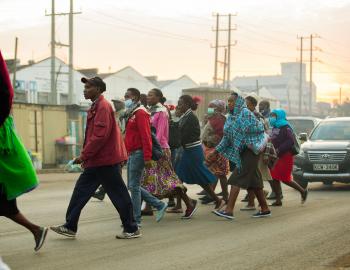INSIDE STORY: Harnessing geothermal energy: The case of Kenya
INSIDE STORY: Harnessing geothermal energy: The case of Kenya
Share this:
Resource detail:
Date:
Author:
CDKN Global
Type:
Case studies
Organisation:
Government of Kenya
Themes:
Low carbon energy,
Policy and practice
Kenya’s heavy reliance on hydroelectricity production has made the country vulnerable to climate change impacts, such as drought and erratic rainfall patterns. This Inside Story, Harnessing geothermal energy: The case of Kenya, Kenya needs to develop a more resilient and stable supply of electricity, while rapidly developing its base load of electricity production to meet growing demand. Although the path of least resistance would be to expand its fossil fuel-based thermal production, Kenya’s Vision 2030 strategy places priority on low-carbon development including renewable energy source development – with geothermal playing a critical role.
Key messages
- Kenya has relied on hydroelectricity as a key low-carbon energy source and a way of expanding energy services. However, droughts and erratic rainfall have made hydropower unreliable, reducing the country’s adaptive capacity. Nearly 77% of Kenyans still lack access to modern energy services, which impedes development efforts.
- Kenya’s Vision 2030 prioritises low-carbon development. An expanded and diversified range of renewable electricity sources is critical, and geothermal energy is at the forefront of low-carbon options. Geothermal is readily available and is not affected by climatic variability.
- Kenya has catalysed a productive geothermal sector by establishing a specialist government institution, the Geothermal Development Company, which shoulders some of the financial risk for the private sector at exploration, appraisal and drilling stages.
- Kenya has accessed previously unattainable funding sources by aligning further investments in geothermal energy with climate change and development objectives (e.g. carbon/climate finance, donor funding and local public finance).



